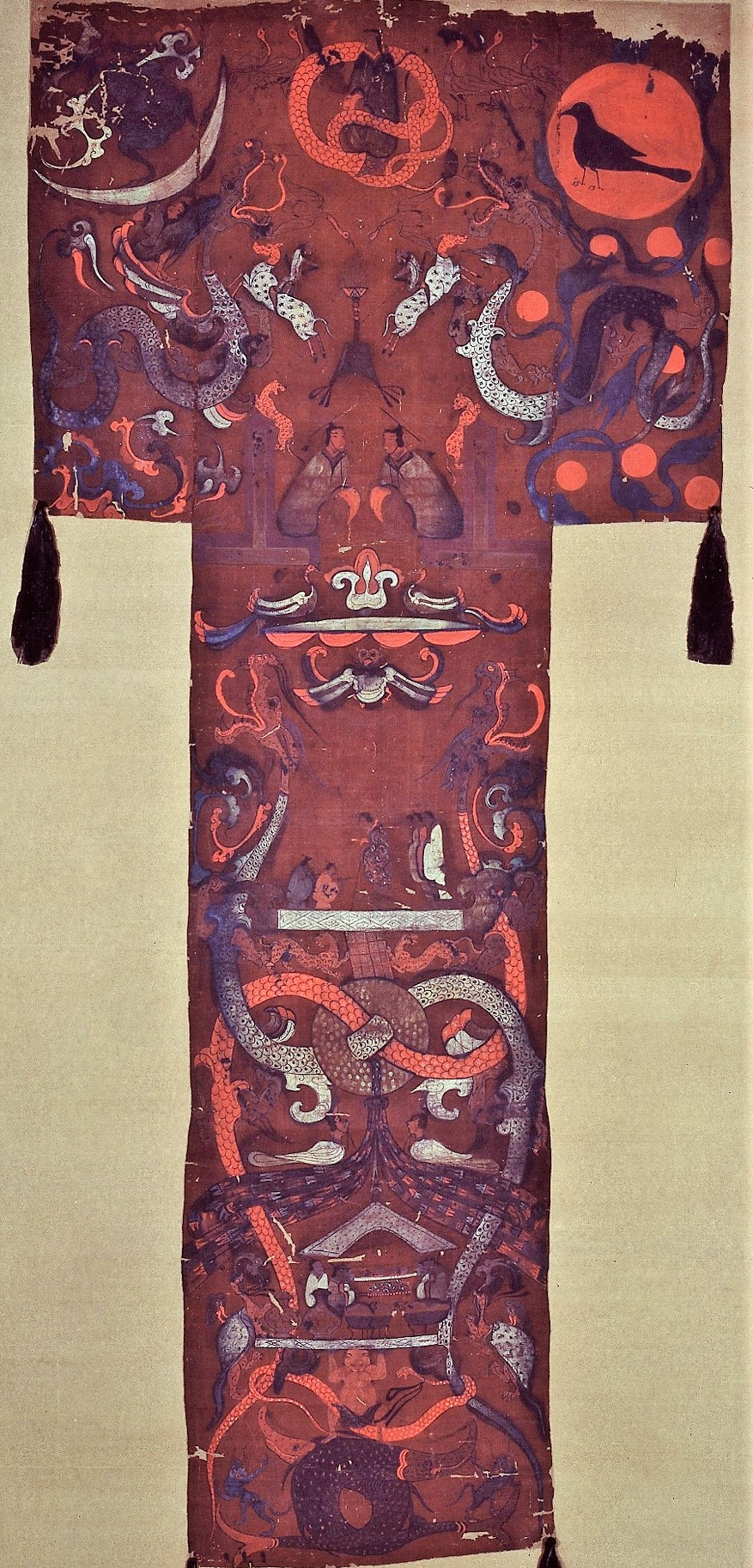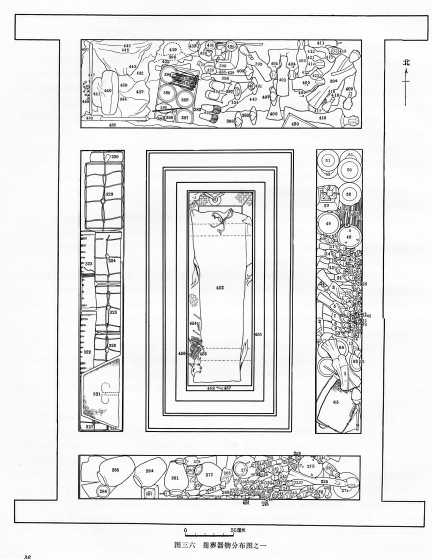

C. Mawangdui 馬王堆
From 1972 to 1974, three elite Western Han 西漢 (202 BCE - 9 CE) tombs,
were scientifically excavated at Mawangdui 馬王堆. Two of these tombs
(tombs Nos. 1 and 3, ca. 168 BCE) were undisturbed and especially well-preserved,
containing not only a wealth of finely-crafted funerary items, but also some forty manuscripts on silk, wood, and bamboo.
Imagining the Afterlife Journey
The T-shaped silk banner, below, which was found laid over the coffin of the deceased of tomb M1,
apparently respresents the tomb occupant on her post-mortem spirit journey,
and probably was intended through its magic to assist and guide the deceased on this journey.
|
Mawanngdui tomb structures
Museum Replicas
The last time I was in Changsha (2018), I was able to take nice photos of the T-shaped banner on display at the Changsha Museum.
It must be noted that the T-shaped banner on display is a replica.
China has a strange relationship to its past, and museums are often used as tools for political education
and inculcating nationalism. And replicas fill in the story. To me, it would feel strange going to a museum to see a replica of a Renior painting, but musuems in China often want to fill in the spaces to tell a larger narrtative about an imagined Chinese identity.
For example, I was in the National Museum in Beijing and saw the small (37.5cm x 28cm) painting
of a man riding a dragon accompanied by
a crane and a fish, excavated in a Warring States period Chu tomb (M1) at Zidanku 子彈庫 in 1973.
Wow, I didn't realize this was in Beijing... then I read the caption.
|
Of course, there needs to be a responsible balance between the use of replicas and originals in musuems, especially to protect and preserve original artifacts (the T-shaped banner is exceptionally fragile). Unfortunately, authenticity can be lost through the use of replicas.
It just seems so strange to go to a museum to see a replica, when (unlike the Zidanku painting in Beijing) it is even not labeled as a replica!
Links to Mawangdui Artifacts
Examine the T-Shaped Banner from Tomb 1Examine the T-Shaped Banner from Tomb 3
Examine the Artwork on the Nested Coffins
See other Artifacts from these Tombs


